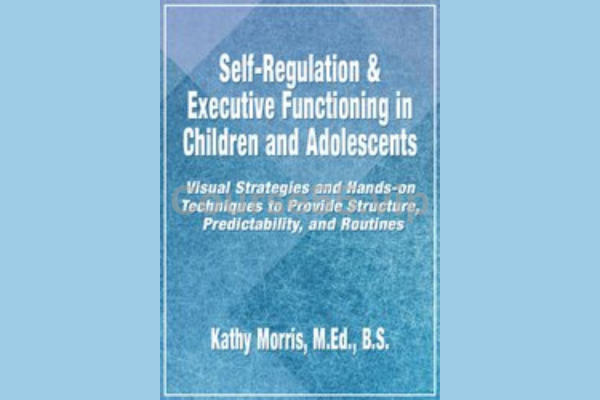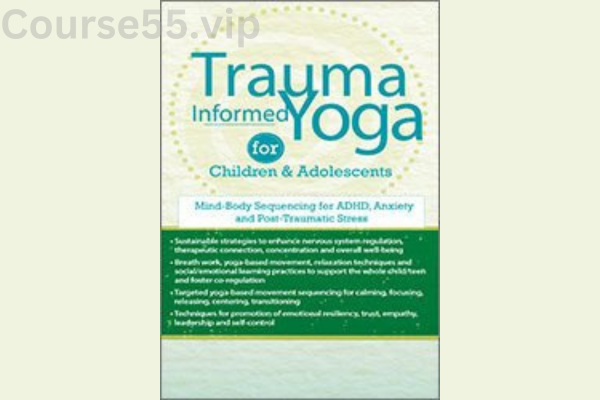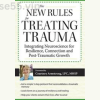New Rules for Treating Trauma: Integrating Neuroscience for Resilience, Connection and Post-Traumatic Growth By Courtney Armstrong – PESI
$249.00 Original price was: $249.00.$23.10Current price is: $23.10.
New rules for treating trauma: integrating neuroscience for resilience, connection, and post-traumatic growth – Digital Download!

New Rules for Treating Trauma: Integrating Neuroscience for Resilience, Connection and Post-Traumatic Growth By Courtney Armstrong – PESI
Overview

New Rules for Treating Trauma: Integrating Neuroscience for Resilience, Connection, and Post-Traumatic Growth
In recent years, the interdisciplinary interplay between neuroscience and psychology has unveiled groundbreaking insights into trauma treatment. The course titled “New Rules for Treating Trauma: Integrating Neuroscience for Resilience, Connection, and Post-Traumatic Growth” by Courtney Armstrong offers a redefined approach to trauma therapy. It explores the limitations of traditional treatment methods, such as medication and cognitive-behavioral therapy (CBT), which often fall short of facilitating profound emotional healing. Participants in this course gain access to revolutionary concepts like memory reconsolidation, providing them with innovative tools to clear trauma effectively at its roots. Let’s delve deeper into the core components of Armstrong’s course and examine how it reshapes the landscape of trauma therapy.
Understanding Trauma’s Neurological Effects
One of the foundational aspects of the course is understanding how trauma fundamentally affects both emotional and neurological processes. Participants are introduced to how trauma can alter brain function, leading to emotional dysregulation, anxiety, and other mental health issues. Research indicates that traumatic experiences can result in lasting changes in brain areas responsible for memory processing and emotional regulation, such as the amygdala and hippocampus. Recognizing these changes equips clinicians with the knowledge required to create effective treatment plans tailored to the unique needs of each client.
Moreover, the course emphasizes the importance of an empathic understanding of a client’s traumatic experiences. Familiarity with the neurological effects of trauma not only improves a clinician’s ability to approach therapy but also fosters a more supportive environment for clients. By acknowledging the profound effects trauma has on the brain, clinicians can implement more targeted and effective interventions, facilitating recovery through a deeper understanding of the neurological landscape.
Developing Resilience for Healing
The course also highlights the essential role of resilience in overcoming the aftermath of trauma. Building resilience equips clients with not only the strength to navigate the challenges of their experiences but also the ability to thrive moving forward. Armstrong’s training provides clinicians with various strategies to foster resilience in their clients. These strategies include teaching coping mechanisms and self-regulation skills that enable clients to manage their trauma responses effectively.
For instance, exercises such as mindfulness and grounding techniques can help clients reconnect with their bodies and emotions. This reconnection is crucial for individuals who often experience dissociation as a coping mechanism following trauma. By incorporating resilience-building strategies, therapists can empower clients to transform their experiences into opportunities for growth. Resilience coaching is a critical element in promoting long-term healing and ensuring that clients feel supported in their journey towards recovery.
Techniques to Enhance Resilience:
- Mindfulness Practices: Encourage clients to engage in practices that cultivate present-moment awareness.
- Strength-Based Approaches: Focus on clients’ strengths and past successes to build their confidence.
- Goal Setting: Assist clients in establishing achievable goals that foster a sense of purpose and direction.
Building Trust and Healing Relationships
An integral aspect of trauma recovery is rebuilding trust in relationships that may have been strained or damaged due to traumatic experiences. The course emphasizes techniques to help clinicians create a safe and rehabilitative environment for their clients. This fostering of connection is paramount, as trauma can lead individuals to isolate themselves, further complicating their recovery journey.
Armstrong teaches methods for establishing rapport and trust, crucial for effective therapeutic alliances. Techniques may include active listening, validation of feelings, and consistent therapeutic engagement. By enhancing relational connections, clients can experience a renewed sense of safety, allowing them to explore their trauma in a supportive context. Additionally, supportive social networks are explored, highlighting the importance of seeking connection with others as a pathway towards healing.
Connection-Fostering Techniques:
- Therapeutic Rapport Building: Develop trust through consistent interaction and empathetic responses.
- Validation and Normalization: Acknowledge clients’ feelings and experiences to reduce feelings of isolation.
- Encouraging Social Engagement: Facilitate connections with support groups or community resources.
Supporting Clients Through Post-Traumatic Growth
Post-traumatic growth is a transformative process where individuals find meaning and build a positive identity after experiencing trauma. The course delves into how clinicians can assist their clients in this growth process. Armstrong offers insights into identifying areas where clients can experience transformation, helping them to reframe their narratives in a way that fosters healing and personal development.
Clinicians are taught to guide clients in discovering new strengths or insights gained from their trauma. This may involve integrating experiences into personal narratives that emphasize resilience and growth. Encouraging clients to reflect on their experiences, the course provides practical tools for facilitating discussions that promote healing and personal transformation.
Key Concepts in Post-Traumatic Growth:
- Meaning-Making: Help clients explore what they can learn from their trauma experiences.
- Positivity and New Perspectives: Encourage clients to identify new goals and aspirations post-trauma.
- Strength Recognition: Assist clients in acknowledging the inner strength they may have developed as a result of their experience.
Implementing Practical Neuroscience Techniques
One of the standout features of Armstrong’s training is its focus on practical applications. The course offers hands-on tools, case studies, and exercises that clinicians can implement immediately in their practices to assist clients in reprocessing traumatic experiences. The structured, step-by-step protocol for memory reconsolidation is a significant component of this practical application. Participants learn to guide clients through recalling and updating traumatic memories rather than simply re-experiencing them.
By utilizing these structured approaches, clinicians can potentially facilitate effective trauma processing in as little as a single session. This not only streamlines the healing process but also addresses the urgent needs of clients seeking relief from their trauma histories. The inclusion of case studies provides real-world context for applying the techniques learned, enabling practitioners to enhance their skills and adapt the training to their specific client populations.
Key Practical Tools:
- Memory Reconsolidation Protocols: Step-by-step guide to reprocessing traumatic memories.
- Case Studies: Real-world examples showcasing the application of techniques in various contexts.
- Immediate Exercises: Interactive activities that clinicians can employ right away in their therapy sessions.
Clinician Testimonials: Positive Feedback and Outcomes
Feedback from clinicians who have attended Armstrong’s training has been overwhelmingly positive. Many report significant shifts in their therapeutic practice, underscoring the effectiveness of the neuroscience-based strategies introduced. Participants often highlight the engaging nature of the content, noting that it not only informs but also inspires them to develop more effective treatment methodologies.
This transformative approach is recognized as a game-changer for trauma therapy practitioners. It equips them with necessary knowledge and skills to handle complex trauma cases effectively, fostering a pathway to recovery and growth for their clients. Clinicians have noted tangible improvements in client outcomes, suggesting that the integration of neuroscience into therapeutic practices can prompt significant benefits for clients on their healing journey.
Conclusion
Courtney Armstrong’s “New Rules for Treating Trauma: Integrating Neuroscience for Resilience, Connection, and Post-Traumatic Growth” is not just a course; it is a paradigm shift in the realm of trauma therapy. By transcending traditional treatment modalities and incorporating current neuroscience findings, the course lays the groundwork for a robust, nuanced understanding of trauma and healing. The insights gleaned through this transformative training are not merely theoretical; they offer practical, actionable strategies that empower both clinicians and clients.
By cultivating resilience, fostering connections, and guiding clients towards post-traumatic growth, therapists are equipped to navigate the complexities of trauma with newfound confidence and efficacy. Ultimately, this course stands as an invaluable resource for any practitioner determined to improve their trauma treatment strategies, heralding a new era of effective healing in the mental health landscape.
Frequently Asked Questions:
Business Model Innovation: We operate a group buying strategy, allowing participants to share costs and access popular courses at reduced prices. This model benefits individuals with limited financial resources, despite concerns from content creators about distribution methods.
Legal Considerations: The legality of our operations involves complex issues. Although we don’t have explicit permission from course creators to resell their content, there are no specific resale restrictions stated at the time of purchase. This ambiguity creates an opportunity for us to provide affordable educational resources.
Quality Control: We ensure that all course materials purchased are identical to those offered directly by the creators. However, it’s important to understand that we are not official providers. As such, our offerings do not include:
– Live coaching calls or sessions with the course author.
– Access to exclusive author-controlled groups or portals.
– Membership in private forums.
– Direct email support from the author or their team.
We aim to reduce the cost barrier in education by offering these courses independently, without the premium services available through official channels. We appreciate your understanding of our unique approach.
Be the first to review “New Rules for Treating Trauma: Integrating Neuroscience for Resilience, Connection and Post-Traumatic Growth By Courtney Armstrong – PESI” Cancel reply
You must be logged in to post a review.

















Reviews
There are no reviews yet.